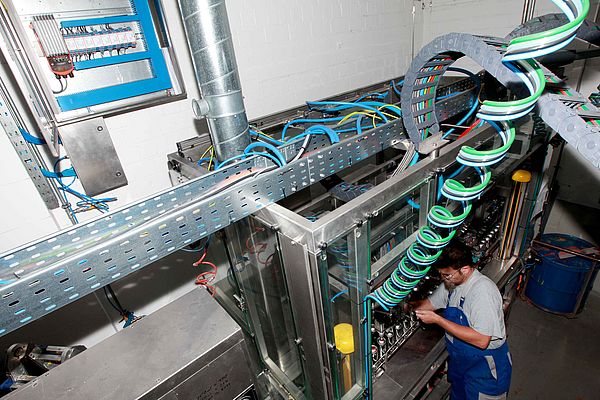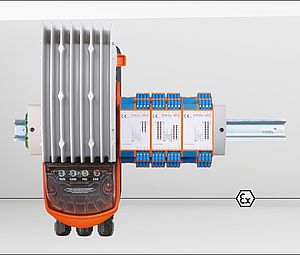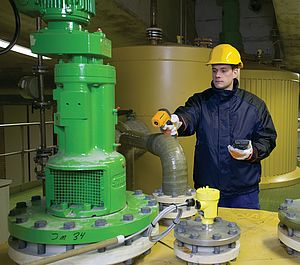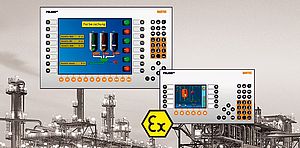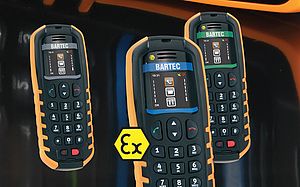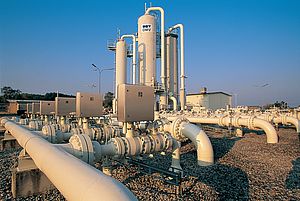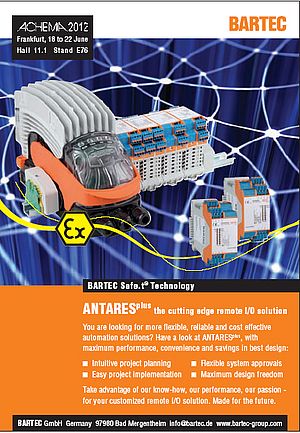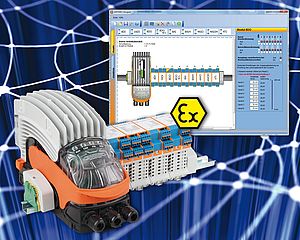Aerosol can and touch-up applicator manufacturer Motip Dupli is using the innovative ANTARES remote I/O system at its new high-tech filling facility and largest production location
Most people associate color from an aerosol can with graffiti. But aerosol cans and their colorful contents have a lot more to offer. Entire branches of industry rely on the products of aerosol producers. Motip Dupli is Europe’s largest aerosol can and touch-up applicator manufacturer. Nearly everyone has at one time held its world-famous Dupli-Color color aerosol cans in their hands, or at least products that the company fills as a contract manufacturer for many building supply stores or discounters.
Fit for the future
Since May, the “European aerosol can champion” has been using the ANTARES remote I/O system from BARTEC at its new high-tech filling facility and largest production location in the Neckar-Odenwald district’s tranquil town of Hassmersheim. The D line was specifically designed for filling color aerosol cans produced in small series and special series. “What is noteworthy is that we can produce every size of container there, from 36 to 750ml. Especially in the area of marking spray, large containers are currently in demand,” explains Ralf Mündörfer, plant manager and authorized officer at Motip Dupli.
To be able to optimally implement new marketing product ideas, production and design had to become more flexible. The state-of-the-art filling line meets this requirement completely. It consists, first of all, of an automated solvent control which the technology team in Hassmersheim itself constructed and helped to design, and secondly, a modern filling machine delivered as a complete package by a machine manufacturer specialized in aerosols and spraying systems.
To ensure there is no doubt when discussing responsibilities, the two system parts should be completely separate from one another. “Wherever there are interfaces, there are problems. Is it because of the machine or the interface? – and so on. So we’re steering clear of that,” says Mündörfer. “As zone 1 explosion protection precautions are required due to the aerosols and propellants used, we have to be 100% safe. With explosion protection, we don’t make compromises.”
Less is more
Due to the direct installation of the remote I/O system in the potentially explosive area and short paths, the company was able to save over 4,000 meters of cabling. But that’s not all. The smart solution has also created many savings at other places. “If we had wired the system conventionally, we would have had to install switch amplifiers. A separate cabinet for that would have in turn been necessary. The intrinsically safe inputs are a very clear advantage,” says Roland Schäfer, head of maintenance at Motip Dupli. For the solution with ANTARES, the stainless steel compact switching cabinet that was already on-site was completely sufficient. And there is still a lot of space in the cabinet. Expensive pressurized designs are superfluous here.
Lots of freedom
Another advantage is the quick and problem-free implementation. The switching states that additionally indicate on the module the state of each I/O channel via LED also contribute to an easier start-up. “It was very important to us to be able to see exactly what happens at that point,” says Timo Nies, servicing representative.
However, the decisive advantage of ANTARES is its flexible system authorization. Until now, each of the remote I/O systems available on the market had to be fully planned in advance and installed in certified Ex e enclosures with inflexible authorization. If something is changed, the user has to have it certified again. That costs time and nerves and, above all, money. With ANTARES, by contrast, at most you have to replace the system plate if the temperature changes due to higher output.
It almost configures itself
The system’s intuitive software operation allows the system to be planned and configured with a few mouse clicks. During generation the program ensures that certain limit values such as distances, power management and the maximum data lengths on the PROFIBUS are adhered to.
The constructor calculates the required inputs/outputs including required reserves for the most inexpensive, i.e., optimal system and gives the user the possibility of seeing exactly how much capacity still remains. “That was also a reason for deciding in favor of the new remote I/O from BARTEC. With other products, you have to determine in advance exactly what you want to do,” says Timo Nies.
The control engineer at the aerosol can and touch-up applicator manufacturer programmed the sequence control of the solvents and the belt control. “The programmer, who works a lot for the automobile industry, had never even seen such a system. But it was no problem at all for him to quickly adjust. The system really is intuitive,” explains Roland Schäfer.
A genuine space-saver
In case of a failure the modules can be replaced very quickly and easily. “That is a clear improvement. Previously, we had several inputs that we couldn’t replace individually. Now we can replace each module separately. That certainly has a positive effect on the maintenance costs,” notes Roland Schäfer. A hot-swap function ensures a high level of system availability. In short: long and expensive production interruptions and shutdown times are a thing of the past.
The Motip Dupli technology team also appreciates the enormously large terminal compartment that offers more than enough space for work. “The ergonomics fit. The design makes everything easier. Design is not just about being pretty or not pretty. Anyway, that’s a matter of taste. If anything, good design means that it is user-friendly, allows easy access and that the wiring is uncomplicated,” says Mündörfer.
Economical technology
Due to installation directly in the field, the majority of cable runs and cable routes are already omitted in planning and the installation costs drop. In addition, the system can be easily integrated into existing communication networks that are not explosion-protected. And it requires very little space, which definitely plays a role in many existing systems. “We expect most of the savings to be in maintenance and servicing. Because that’s what really costs money. How stable the system is will be revealed after it has run six or twelve months at full load,” the plant manager emphasizes. “But since the system has been in operation, we haven’t even had to think about it,” Schäfer adds. And that is surely the biggest compliment that you can give the new ANTARES remote I/O system from BARTEC.



